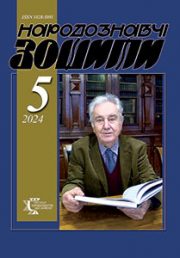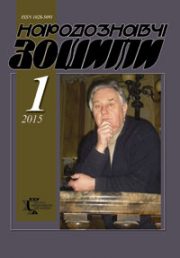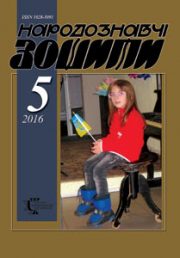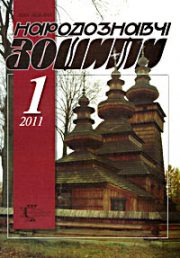The Ethnology Notebooks. 2021. № 5 (161), 1267—1272
UDK [069.6:7](477:510)”19/20″
DOI https://doi.org/10.15407/nz2021.05.1267
ESTABLISHMENT OF ART MUSEUMS OF CHINA: EXPERIENCE FOR UKRAINE
Xiao Luo
- ORCID ID: https://orcid.org/ 0000-0003-4352-7809
- postgraduate, Department of Theory and History of Art
- The National Academy of Fine Arts and Architecture,
- 20, Voznesensky Descent, 04053, Kyiv, Ukraine,
- Contacts: 976076528@qq.com
Abstract. The article examines the formation of Chinese art museums from the 1950s. Also it highlights the impact of Mao Zedong’s reforms (they are called the «cultural revolution» in historiography) on the development of the museum sphere. The main attention is paid to the 1990s changes, which affected the economic, social and political life of China.
Based on the analysis of the art museum sphere of China, the position of art museums of Ukraine is partially covered. The paper notes that the formation of China’s art museum industry is a good example for Ukrainian museums. The urgency of the work lies in the fact that the comprehensive analysis of the art museum business of China highlights important elements of the combination of public policy and private initiative, useful for the future development of Ukrainian museology.
The formation of art museums in China through the prism of the Ukrainian experience is the object of research. While the reasons for the rapid development of art museums in China, the development of private collections in China, Chinese museum lessons for Ukraine are the main subjects of the work.
The source base of the research is modern studies of Chinese, English and Ukrainian art historians and art critics.
The purpose of the article is to offer a description of the evolution of the museum system in China after Deng Xiaoping’s reforms, which began in 1978, with coverage of key historical facts that led to the spread and development of the industry. In order to achieve the goal the paper used theoretical research methods: axiomatic, historical, method of systems analysis.
The article is also based on the use of general scientific research methods: analysis, synthesis and comparison.
Keywords: China, museum business, art museums, formation, current state, experience, Ukraine.
Received 26.10.2021
REFERENCES
- Arshad, Z. (2017). Constructing Histories to Shape the Future: China Design Museum. Design and Culture (Vol. 9, pp. 18—21).
- Hooper-Greenhill, E. (2012). Changing Values in the Art Museum: Rethinking Communication and Learning. In Museum Studies: An Anthology of Contexts (Pp. 517—532). Malden, MA: Wiley-Blackwell.
- Chakraborty, М. (2014). Historical buildings and their adaptive return to the museum. Journal of Conservation and Museum Studies (Vol. 47, pp. 30—38).
- Chesnokov, A.V. (2016). Museum Science in the PRC: Approaches to Periodization. Youth Bulletin of the St. Petersburg State Institute of Culture, 2, 25—27 [in Russian].
- Varutti M. (2014). Museums in China. The Politics of Representation after Mao (Heritage Matters). Woodbridge: Boydell Press.
- Lu, T. (2013). Museums in China. Power, Politics and Identities. London: Routledge.
- Honcharova, O.M. (2015). The Hermeneutic discourse of museum communication. Culture of Ukraine (Issue 48, pp. 139—150) [in Ukrainian].
- Bondarenko, I.V., & Chzhaokhui, Van. (2018). Introduction of a categorical apparatus «extroverted» and «introverted» in relation to the characteristics of the interior space of modern museums. Traditions and innovations in higher architectural and artistic education (Issue 2, pp. 14—18) [in Ukrainian].
- Mortaki, S. (2012). Key Issues Facing Art Museums in the Context of Their Social Role. International Journal of Humanities and Social Science (Vol. 2, pp. 134—137).
- Chzhaokhui, Van. (2018). Problems of organizing the exposition of art museums and their influence on the formation of the architectural and spatial solution of museum buildings (XX—XXI century). Scientific notes of Ternopil National Pedagogical University named after Volodymyr Hnatyuk (Issue 38, pp. 245—252) [in Ukrainian].







